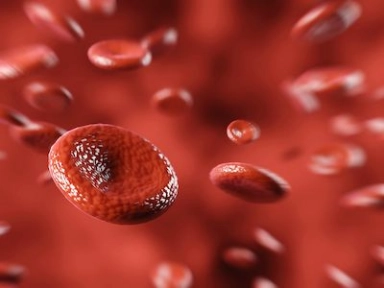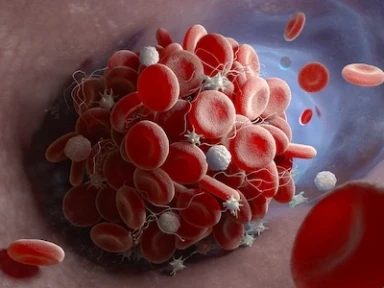Prolonged Thromboprophylaxis with LMWH after Abdominal or Pelvic Surgery
Cochrane update: Prolonged Thromboprophylaxis with low-molecular-weight heparin beneficial after Abdominal or Pelvic surgery
Update shows a trend towards reduced symptomatic venous thromboembolism with extended thromboprophylaxis.
Key Takeaway
-
Prolonged thromboprophylaxis (≥14 days) with low-molecular-weight heparin (LMWH) vs inpatient-only prophylaxis after major pelvic or abdominal surgery is associated with a reduction in all venous thromboembolism (VTE), all deep vein thrombosis (DVT) and proximal DVT outcomes.
-
A trend towards reduced symptomatic VTE was observed with prolonged thromboprophylaxis with LMWH.
-
Incidence of overall bleeding and mortality was not different between the LMWH and control groups.
Why This Matters
-
Previous evidence suggests the risk of developing blood clots in weeks to months after surgery, even after a patient is considered safe for discharge from the hospital.
-
Although some guidelines recommend, not all physicians recommend a prolonged course of blood thinner injections for a postoperative patient after discharge.
-
Adoption of extended VTE prophylaxis is slow which necessitates updates to the evidence. Reassessing current evidence might increase adoption of extended VTE prophylaxis.
Study Design
-
This Cochrane review evaluated 7 randomised controlled trials (n=1728 participants) that compared prolonged thromboprophylaxis with LMWH vs placebo or control in patients undergoing abdominal or pelvic surgery for both benign and malignant pathology.
-
Primary outcomes: incidence of VTE (both symptomatic and asymptomatic VTE and pulmonary embolism) within 30 days of surgery.
-
Secondary outcome: incidence of all DVT, proximal DVT, symptomatic VTE, bleeding complications and mortality within three months after surgery.
-
Funding: None disclosed.
Key Results
-
VTE incidence after major abdominal or pelvic surgery in patients receiving out-of-hospital LMWH was 5.3% vs 13.2% in the control group (Mantel Haentzel [M-H] OR, 0.38; 95% CI, 0.26-0.54; I2=28%).
-
Incidence of all DVT (5.3% vs 12.9%; M-H OR, 0.39 [95% CI, 0.27-0.55]; I2=28%) and proximal DVT (0.8% vs 3.9%; M-H OR, 0.22 [95% CI, 0.10-0.47]; I2=0%) was lower in LMWH prophylaxis than those in control groups.
-
A trend towards reduced symptomatic VTE was observed with prolonged thromboprophylaxis with LMWH vs control group (0.1% vs 1.3%; M-H OR, 0.30 [95% CI, 0.08-1.11]; I2=0%).
-
No significant difference observed between LMWH prophylaxis and control arms in the incidence of:
-
overall bleeding (3.4% vs 2.8%; M-H OR, 1.10 [95% CI, 0.67-1.81]; I2=0%) and
-
mortality (3.9% vs 3.8%; M-H OR, 1.15 [95% CI, 0.72-1.84]; I2=0%).
-
-
Quality of the evidence for all the above findings was moderate.
Limitations
-
Included trials had 'surrogate' endpoints based on objective diagnosis carried out at extended time intervals after surgery.
-
All included trials had high attrition rates.
- Felder S, Rasmussen MS, King R, Sklow B, Kwaan M, Madoff R, Jensen C. Prolonged thromboprophylaxis with low molecular weight heparin for abdominal or pelvic surgery. Cochrane Database Syst Rev. 2019;8:CD004318. doi: 10.1002/14651858.CD004318.pub5. PMID: 31449321




